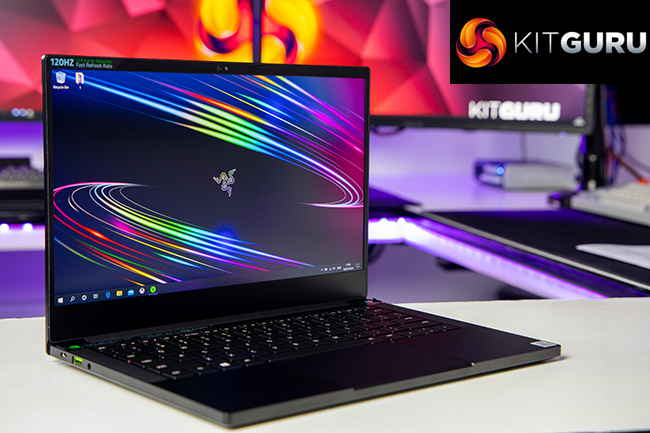In comparison to our previous look at the Razer Blade Stealth 13, earlier this year, this version featuring the GTX 1650 Ti Max-Q is hands down the one to go for. Aesthetically it's clean and understated, making this a real stealth machine, you'd be forgiven for not expecting the power this little machine has under the hood. The build quality is excellent, along with its tiny form factor, this is a very compelling ultrabook for those on the go. Pair this with a portable USB-C/Thunderbolt dock and you'll be set for any situation that you find yourself in, whether that's working or gaming on the go.
Under the hood we were impressed with the component choices Razer has managed to cram into the tiny chassis. A 10th Gen Quad-Core i7-1065G7 CPU, 16GB 3733MHz Dual-Channel RAM, 512GB PCIe NVMe M.2 and the NVIDIA GeForce GTX 1650 Ti Max-Q design GPU assured us this little machine meant business and overall we were impressed with the results that it achieved.
Of course you are paying a premium, coming in at £1899.99, and we feel that's the biggest set back but you have to take into consideration all of the pros here. This is a 13″ ultrabook with a blazing fast 120Hz 1080p screen with full 100% sRGB coverage, and it looks absolutely stunning. The glass track pad is a wonder to use, easily in the ranking for the best track pad we've used. The newly improved, extra large, shift key really makes gaming that much easier and small design adjustments like this are greatly appreciated considering the miniature size of the RGB Chroma keyboard.
The only other setbacks are the chassis is a fingerprint magnet and also the poor performing speakers, at 50% volume or under they sound great and are even quite loud but put them between 50% – 100% and you'll notice the rattle of the speakers vibrating the chassis becomes incredibly irritating. Our advice would be to use headphones but considering the target audience of a super portable machine like this, it's clearly aimed at those on the go and Razer are probably expecting you to use headphones anyway.
As an ultrabook with some muscle behind it we are impressed with the battery life from the 53.1Wh cell, with well over 8 hours idle and close to 2 hours when running demanding games, you can expect to get a good overall time with mixed use. Enable the battery saving options and you can expect even more.
Overall we think this is a worthwhile complimentary laptop, if you’ve got a gaming system already but also happen to be someone that travels a lot or does more business than play then this is for you. Either screen you opt for has the full sRGB coverage and colours look excellent, so if you need a tiny Photoshop pal but want to drop into CoD: Warzone at lunch then this will be your best friend.
It is pricey but you’re getting a very solid and absolutely tiny bit of kit here that stands tall. If you’re purely after a gaming beast then look elsewhere, get a big chunky desktop replacement for the same price and you’ll love it… but that’s not what the Stealth 13 is trying to be, it’s trying to be the stealthiest one in the room and personally, we think it’s achieved that.
You can purchase the Razer Blade Stealth 13, from Argos for £1899.99, HERE!
Discuss on our Facebook page HERE.
Pros:
- Great build quality.
- Very stylish design.
- Charge via either USB-C port on either side.
- Glass mouse pad is excellent.
- Beautiful 120Hz screen on such a tiny laptop.
- Despite its size it held up in our tests.
- Synapse software is easy to use.
- Small USB-C power supply.
Cons:
- High price.
- Fingerprint magnet.
- Speakers cause the chassis to vibrate, resulting in distortion.
KitGuru says: The Razer Blade Stealth 13 is certainly worthy of its title as a gaming ultrabook. If you need a portable system that you can use for work as well as play, this is well worth checking out.
 KitGuru KitGuru.net – Tech News | Hardware News | Hardware Reviews | IOS | Mobile | Gaming | Graphics Cards
KitGuru KitGuru.net – Tech News | Hardware News | Hardware Reviews | IOS | Mobile | Gaming | Graphics Cards




